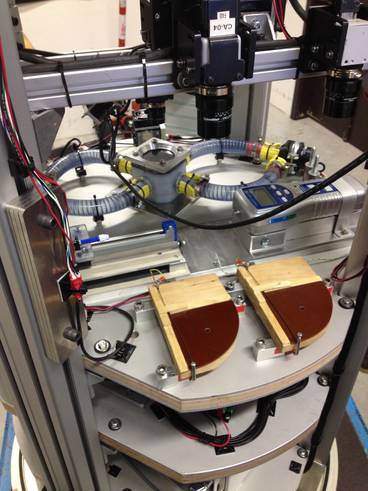Performance and Mechanical Evaluation of the Bio Material Nitinol under Microgravity Conditions (DropTES 2015)

research area: biotechnology
experiment title:
Performance and Mechanical Evaluation of the Bio Material Nitinol under Microgravity Conditions
experiment acronym: DropTES
funding agency:
United Nations / DLR / ZARM
grant number:
DropTES - Program
performing organization:
Universidad Católica Boliviana „San Pablo”, Bolivia
prime investigator:
Prof. Fabio Díaz Palacios
(Maritza Irahola, Jhon Ordoñez, Diego Rojas, Gabriel Rojas)
experiment objective
abstract
Nowadays, the use of smart materials with super-properties is more common, such is the case of “Nitinol”. This material is a Nickel and Titanium alloy and its applications are globally recognized, both in the medical environment (used in the manufacturing of heart devices), as in the robotics’ field (mechanic actuators like muscle wires). This alloy itself is a material of great interest within the academic and industrial investigation, due to its unique and distinctive properties. Among the principal and pretended to be analyzed in the present proposed research, are the shape memory and pseudoelasticity.
In this sense, the “shape memory” property is defined as one with which a determined shape can be molded and fixed to the material thanks to a variety of heat treatments. Thereby, the material can be deformed at low temperatures and recover its “memorized” shape when it is subject to higher temperatures. While the pseudoelasticity is a property that allows considerable modifications to the material without obtaining a plastic deformation. Therefore, this material possesses a higher elastic deformation than other materials. Both properties, have been highly researched by space agencies such as ESA and NASA by performing different experiments with materials, like the EMCH (Elastic Memory Composite Hinge). This test was performed in order to determine the feasibility of using this material as structural material for future space missions. By this way, a practical justification can be inferred for the use of such materials.
It is in this way, we seek to determine the potential advantages of using Nitinol as structural material of satellites or special robots among others. Is it possible to take advantage of its “memory” shape and pseudoelasticity to reduce the design of complex mechanisms or to replace other mechanical actuators?
experiment campaigns
experiment year: 2015
number of catapult launches: 4


 "
"